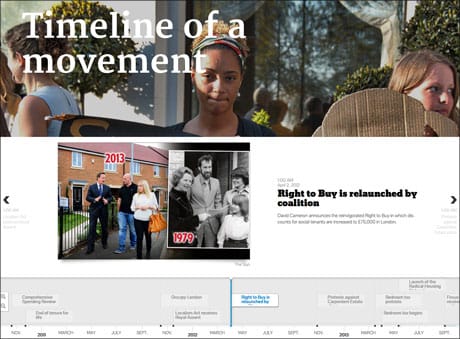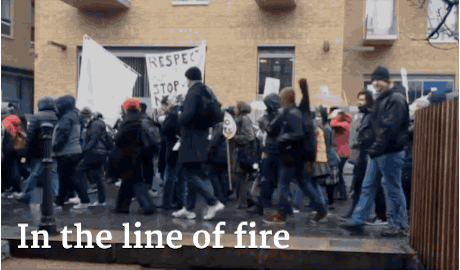How a trade mag made online features more immersive
Two Inside Housing editors talk through the process of piecing together an interactive longform story as their first truly digital-first project


Two Inside Housing editors talk through the process of piecing together an interactive longform story as their first truly digital-first project

This article was migrated from an old version of our website in 2025. As a result, it might have some low-quality images or non-functioning links - if there's any issues you'd like to see fixed, get in touch with us at info@journalism.co.uk.
With the popularity of more immersive storytelling formats on news sites and the rise of Medium as a blogging platform, readers are getting used to a different type of online article.
Now images and videos take up the full screen, while stylish pull quotes and plenty of white space make for a pleasant and common longform reading experience.
But for some trade press titles such layouts are not run-of-the-mill. Social housing mag Inside Housing published its first immersive story this month, using storytelling platform Shorthand.
The piece is a reportage on housing activism in London, complete with an interactive timeline, videos and more traditional investigations.
"We felt like we have to step up our game a bit and try and do something that was just as beautiful and just as immersive and draws people in to get them to read longer stuff," said Jess McCabe, features editor at Inside Housing and one of the journalists who worked on the project.
As a high number of traditionally print publications, Inside Housing has officially made the move to digital-first. But its journalists are still more used to thinking about print layouts and then consider how a feature could be presented online, said executive editor Nick Duxbury.
He told Journalism.co.uk the housing activism piece was the "first time we've really gone out of our way to do it the other way around and make print the second thought".
So what did this process involve for Inside Housing and how resource intensive was it?
The experiment took some time to get started, with the idea of refreshing the presentation of longform features online at the back of the team's minds for months.
"We take longform really seriously," explained Duxbury as he highlighted Inside Housing's drive to get more people reading the magazine's features and investigative pieces online.
"I think along with a lot of other trade magazines, online presentation of our features has been often quite basic and it's not been the most readable or easy on the eye," added McCabe.

Screenshot from The rise of the housing activist
The rise of the housing activist was chosen as the first experiment as the story lent itself to a more immersive multimedia format, said Duxbury. Activists would be shooting a lot of video and taking photos using their mobile phones, as well as documenting the activity on social media.
The topic was also one that would appeal to a wider audience than the magazine's usual readers who work in the housing industry, having the potential to reach a larger number of people.
One of the biggest changes in the approach to feature writing and reporting was the collaboration involved with this particular project.
He said Inside Housing journalists would usually work individually on features. On this occasion, the team used Google Docs to write down parts of the story and then piece together the final version, which had to be shortened from over 10,000 words of collaborative reportage.
They also worked with a developer to get their preferred format up and running on Shorthand, which McCabe told Journalism.co.uk was unusual. "They don't normally work on editorial projects at all," she said, pointing to the additional costs and time involved.
"We tried to structure it like a book", said Duxbury, "with chapters that you can navigate around".

Screengrab from The rise of the housing activist
Changing the pace of the story was key when structuring the piece, and video had an important role – video headers and YouTube embeds are the two formats used by the team.
The number of images shown also proved to be a tricky decision, as overusing visuals can easily distract the reader rather than create a more engaging reading experience.
He said Inside Housing eventually ran two different stories in print based on the project. "In terms of telling our readers where our priorities lie, that's important for us".
And other journalists who would like to use this storytelling format should not underestimate the time that goes into putting everything together from a production perspective, said McCabe.
At Inside Housing, it was all about "doing it ourselves in a small team".
So would they do it again? Duxbury told Journalism.co.uk the team could be more efficient a second time around.
"If we were to repeat it, it would probably be for special projects, things that we really want to get out there and make a song and dance about. It's about choosing what you put your resources into."